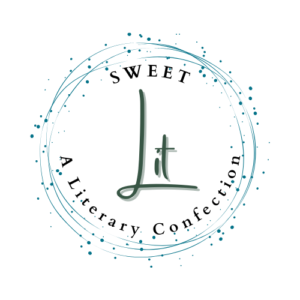Dear Courtney Kersten,
About this time last year, I sat cross-legged on layers of duvets and blankets, against pillows that seemed to stretch the length of my body, with my knees knocking against two of my best friends’ criss-crossed knees. With our thumbs scrolling across our glass phone screens, we each analyzed the results of our natal charts, trying to will meaning into memory and patterns into plans.
My sun in Virgo explained my sensitive nature in large groups, and my moon in Aquarius explained my observant tendencies. Tracing these patterns and comparing our constellations with one another, we welcomed the New Year a little closer to the universe around us, between us, and within us.
In Daughter in Retrograde, we are transported back to these memories of understanding—of trying to will meaning into everything from relationships to the number of stripes on a red-and-white peppermint candy. We enter a mother and daughter’s universe in the prologue, what you call the “Axis Point,” and we begin to learn about their relationship as they sunbathe on a Midwestern driveway.
I was prepared to follow this pivotal relationship, but then I found myself drawn outward toward the pollen in the wind, pulling away from the ground and reaching toward the sky and the ozone layer, soaring further through the mesosphere where we gaze at shooting stars and then the auras in the thermosphere. I found myself among the planets, these celestial bodies, and you encouraged readers to let our minds go blank. Thank you for helping me truly excavate my relationships in order to truly realize my axis point, my center, my balance. When I allowed my mind to go blank, to drift organically toward my respective axis points, where did I find myself? I found myself revisiting that cross-legged memory on a pallet of duvets and pillow where we learned and loved and lived.
As I traversed through this exploration, following you as you discovered your axis point, I couldn’t help but think about the fragility of celestial bodies, the constants, in my own universe. What happens when we lose these axis points? When those closest to us die or leave our universe as we know it? When we have to learn how to be the pendulum of our own lives? You helped me ask the big questions that we often try to brush aside: What is fate? and What the hell are we doing here?
Through you, we learn how to ask questions. We are invited into a new atmosphere, a new space, to ask these questions of ourselves, of our axis points, of our universes. Sometimes, as you’ve so succinctly put it, “this star shit is all I have.” We cling to it.
Daughter in Retrograde has taught me how to gravitate toward signs and meanings in my life, how to transcend expectations of grief and healing. I’m reminded that memories and meanings will always be there as constants: celestial bodies grounding us in our ever-changing universes.
When my best friends and I find ourselves on a living room floor again, arriving from Michigan, New York, and Florida, we’ll have language in the space where we all search for meaning. This space is, and always will be, our axis point.
Your fan,
Lauren Cross – Sweet: Assistant Editor
